- info@aromantique.co.uk
- 07419 777 451
Heather Dawn: Godfrey. P.G.C.E., B.Sc. (Joint Hon)
The article below includes excerpts from my new book, Healing with Essential Oils (working title), published by Healing Arts Press, Inner Traditions winter/spring 2022.
COVID 19 is a novel ‘flu-like’ corona virus which presents with various strains or types. Symptoms range from mild to severe, depending on the age and health condition of the host. 99% of people infected recover. There is much deliberation about effective strategies to combat this virus and to manage the various symptoms: whether a single panacea or multiple strategies. Vaccines are rapidly being developed, but will take some time to appropriately test to ensure effectiveness and safety (there is some controversy and concern surrounding the hasty development of a vaccine for COVID19, especially as vaccines for other corona viruses have proved impossible to create, especially considering that vaccines, in general, take several years to appropriately trial and test for long term efficacy and safety).
Meanwhile, tried and tested natural remedies, aimed at managing the symptoms of the virus and boosting the immune systems ability to stave the virus naturally, have been trialled. For example, vitamin C was applied in Wuhan and New York hospitals, and demonstrated some supportive success (Zuo 2020, Hemila 2003); high doses of vitamin C modify susceptibility to various bacterial and viral infections. Vitamin D3 offers yet another avenue of potential support; vitamin D regenerates endothelial lining in blood vessels and is shown to minimise alveolar damage (Kakodkar et al 2020). There is also vitamin B3, which is highly lung protective and could be used at the onset of coughing (Shi et al 2020), and Zinc, which reduces inflammation and boosts the immune system, and vitamin A, which helps the lungs, heart, and kidneys, and other organs, function properly (Ayyadurai 2020). Low doses of Hydroxychloroquine is also reported to quickly alleviate symptoms (and also to act as a preventative), especially when taken during the early phase of infection (Professor Dolores Cahill 2020).
How we help ourselves
The human micro biome, just like a plants micro biome, consists of trillions of microbes, including viruses, bacteria and fungi, which symbiotically live in and on the body – on the skin, in the gut, and in cavities such as the mouth, ears and vagina – and within an auric-like cloud surrounding the body. The micro biome plays a significant role in protecting and maintaining immunity, and aids a number of vital bodily functions: for example, assisting the breakdown and synthesis of nutrients in the gut and aiding their appropriate absorption, and providing a protective barrier against invasion or proliferation of harmful microbes and pathogens, and more. We coexist with microorganisms; our body houses, feeds, and depends on their presence to maintain functional equilibrium. Poor diet, sugary refined foods, overuse of antibiotics and pharmaceutical drugs, stress and illness, among other factors, can disrupt the harmonious balance of the micro biome, and thus, increase our potential susceptibility to pathogenic invasion, disease and dysfunction (Sayer Ji 202o, Zac Bush 2020).
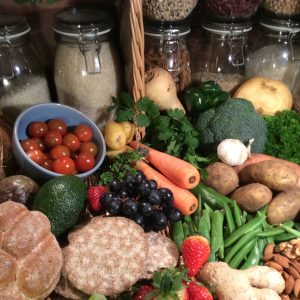 Our first line of defence, when considering immunity, is to support our micro biome’s equilibrium (and thus also our health and vitality through optimum nourishment and resistance): for example, eating nutritionally rich, fresh, seasonal, unrefined, organic whole foods, especially green vegetables, fruits, nuts, beans and other legumes, fermented foods, and so on; drinking plenty of water to hydrate and oxygenate our cells, and flush out waste material from our system; also, fresh air, sunlight (photochemical formation of vitamin D), walking (movement and motion) and gentle exercise (to stimulate peristalsis in the gut, and stimulate the lymphatic system, to remove waste products efficiently from our body). A plants micro biome can also feed ours, hence the advisability of leaving the skin on organic vegetables and fruits, and eating these raw or just lightly cooked.
Our first line of defence, when considering immunity, is to support our micro biome’s equilibrium (and thus also our health and vitality through optimum nourishment and resistance): for example, eating nutritionally rich, fresh, seasonal, unrefined, organic whole foods, especially green vegetables, fruits, nuts, beans and other legumes, fermented foods, and so on; drinking plenty of water to hydrate and oxygenate our cells, and flush out waste material from our system; also, fresh air, sunlight (photochemical formation of vitamin D), walking (movement and motion) and gentle exercise (to stimulate peristalsis in the gut, and stimulate the lymphatic system, to remove waste products efficiently from our body). A plants micro biome can also feed ours, hence the advisability of leaving the skin on organic vegetables and fruits, and eating these raw or just lightly cooked.
The boundaries between physical, psychological and emotional (body, mind, and spirit) often overlap. Indeed, feeling happy, relaxed and calm, positive and optimistic demonstrably influences physical function; heart rate, blood pressure, cortisol levels, endorphin release, digestion, and so on. Therefore, our second line of defence, in terms of immunological support and healthy function, is our state of ‘being’ – ‘being in stress’ or ‘being in equanimity’, ‘being in fear’ or ‘being in peace’. Indeed, we are often reminded that unconditional ‘love’ is an optimum state of ‘being’. Our state of ‘being’ influences our state of ‘body’.
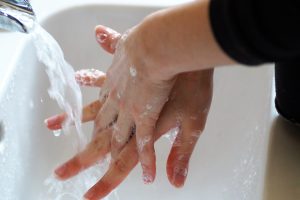 Hygiene, of course, is another line of defence. That is cleanliness, soap and water, rather than obsessive sterilisation. Observation of our micro biome, as already established, demonstrates that microbial co-existence is the background reality; far from being harmful, we actually thrive in their presence – our micro biome plays a significant role in fighting invading pathogens; we also develop immunity through coming into contact with microbes. There are times, though, when our defence mechanisms are compromised, through illness, stress, shock, anxiety, poor diet, lack of sufficient sleep, among other reasons, and our resilience weakens, and this is when complementary interventions may be supportive.
Hygiene, of course, is another line of defence. That is cleanliness, soap and water, rather than obsessive sterilisation. Observation of our micro biome, as already established, demonstrates that microbial co-existence is the background reality; far from being harmful, we actually thrive in their presence – our micro biome plays a significant role in fighting invading pathogens; we also develop immunity through coming into contact with microbes. There are times, though, when our defence mechanisms are compromised, through illness, stress, shock, anxiety, poor diet, lack of sufficient sleep, among other reasons, and our resilience weakens, and this is when complementary interventions may be supportive.
Essential oils to strengthen immunity
To combat and manage COVID 19, Shi et al (2020) suggest the immune system should be boosted during the first and second stage of infection, when there is better chance the infection can be more easily contained and controlled, but they state that the immune system should be suppressed during the inflammatory phase; at this stage, oxygen uptake is critical and can be negatively compromised by over reaction of the immune system.
NB: Essential oils should definitely NOT be applied during the inflammatory third stage of infection, that is, when infection spreads to the lungs (among other reasons, their antimicrobial and anti-inflammatory actions are superseded by the compromised function of the lungs).
While essential oils should definitely not be used during the third stage of Coronavirus, they may usefully be employed as preventatives, particularly in terms of managing hygiene, and during the very early phases of infection. However, just as there isn’t an identified specific drug, or vaccine, that might combat the virus (or in deed other specific viruses – viruses constantly mutate), neither is there an identified essential oil or essential oil component that, so far, demonstrates proven, specific direct effectiveness against COVID 19 or the thousands of mutant strains that now exist.
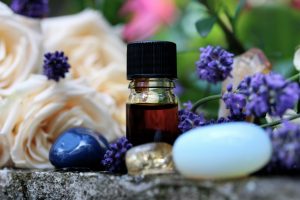 However, all essential oils possess anti-microbial properties, to some degree. Some essential oils possess broad-spectrum bactericidal and anti-viral qualities, while others are more specific in their action, depending on the chemical composition of the essential oil and the type of microbe; broad-spectrum in this context does not mean a single essential oil or blend of essential oils will kill all viruses or all bacteria. Essential oils are, even so, generally and variously antiviral, anti-bacterial, anti-fungal, anti-inflammatory, mucolytic and tissue regenerating, among other things. Blending certain essential oils together can potentiate their strength and increase their range of action.
However, all essential oils possess anti-microbial properties, to some degree. Some essential oils possess broad-spectrum bactericidal and anti-viral qualities, while others are more specific in their action, depending on the chemical composition of the essential oil and the type of microbe; broad-spectrum in this context does not mean a single essential oil or blend of essential oils will kill all viruses or all bacteria. Essential oils are, even so, generally and variously antiviral, anti-bacterial, anti-fungal, anti-inflammatory, mucolytic and tissue regenerating, among other things. Blending certain essential oils together can potentiate their strength and increase their range of action.
Essential oils, thus, work well preventatively, staving infection and pathogenic invasion, and are especially useful during the early stages of infection, ‘nipping in the bud’ opportunity for proliferation. In this way, essential oils support the immune system. They also support hygiene. They alleviate symptoms, such as those associated with colds and ‘flu; for example, headaches, nasal and sinus congestion, muscle aches and pains, insomnia, depression and anxiety. Further, unlike conventional antibiotics, essential oils do not disrupt the body’s natural micro biome.
 Essential oils also instigate psycho-emotional responses that may potentially instil a sense of feeling peaceful and calm, uplifted and grounded; optimal states that are shown to support efficient function of the immune system.
Essential oils also instigate psycho-emotional responses that may potentially instil a sense of feeling peaceful and calm, uplifted and grounded; optimal states that are shown to support efficient function of the immune system.
So, essential oils may aid and support resilience in various ways.
Some of the most potent anti-microbial essential oils include:
Cinnamon bark and leaf, Clove bud and leaf, Eucalyptus globulus, Pine, Tea Tree and Thyme, among others (these oils must be applied with caution because they are potential sensitisers and skin and mucous membrane irritants).
However, remember, no matter how valuable they are, essential oils are not ‘cure-alls’. They are, none-the-less, valuable integrated components that may significantly contribute to holistic health and wellbeing.
See here for advice about applying essential oils safely and effectively:
Measuring Essential Oils for Personal Application
Books
Essential Oils for the Whole Body
Essential Oils for Mindfulness and Meditation
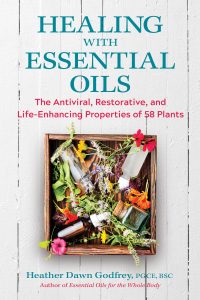
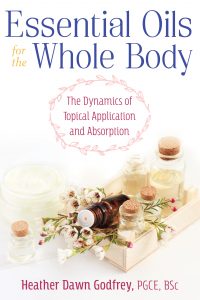
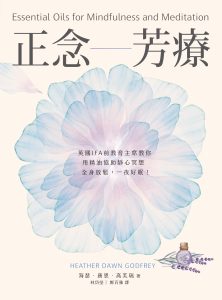
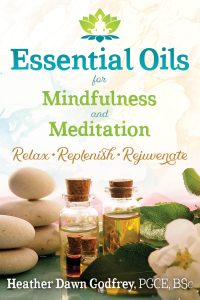
References (alphabetical)
Bibliography